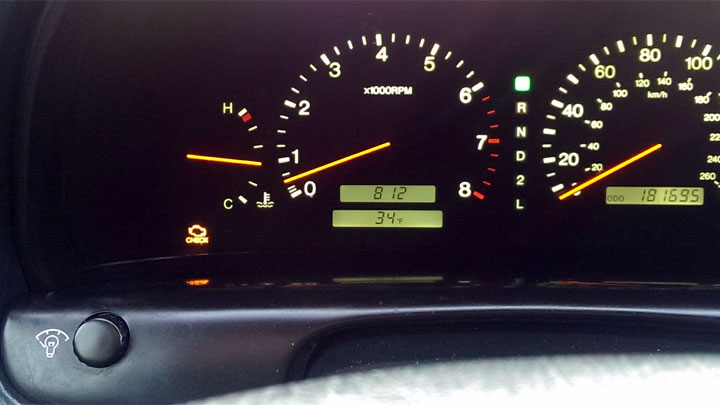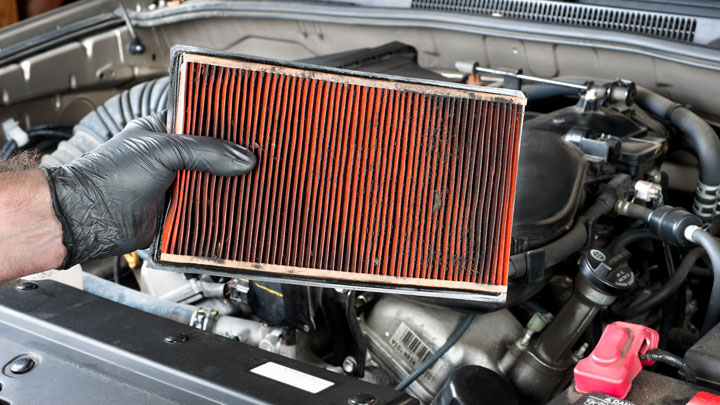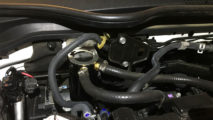Last Updated on August 11, 2022
In this article, we’re going to talk about one part in the engine system called the “Idle Air Control Valve” or in some country also known as idle speed control valve (ISCV) or idle speed stabilizer. I hope after read this article, you will know the basic function, bad symptoms, the average replacement cost and tips to clean. Here we go:
How an Idle Air Control Valve Works
The idle air control valve is a component of the internal combustion engine. The function of this valve is to manage the engine idle speed so that it stays within a normal RPM (revolutions per minute).
For instance, whenever you stop or park your vehicle, the engine will continue running. It is important that the engine runs at a speed of somewhere around 700 and 1,100 RPM while it is idle. This helps prevent the engine from stalling out or using more fuel than necessary
If the engine idle speed goes higher than 1,100 RPM or lower than 700 RPM, the idle air control valve works to either decrease or increase the speed; respectively. That way, the speed can stay within the proper RPM range.
The idle air control valve is connected to the intake manifold of the vehicle. The engine control module manages the idle control valve based on the information it receives from other sensors in the vehicle.
Basically, once the engine control unit knows the electrical system load and the engine’s temperature, it will be able to properly manage the idle control valve so that the idle speed either goes up or down.
Related: DTC P0505, DTC P0506, DTC P0507
Top 3 Symptoms of a Bad Idle Air Control Valve
When your vehicle’s idle air control valve starts to go bad, you will be able to notice some strange symptoms. Many of these symptoms will impact your ability to drive and operate your vehicle. That is why you need to take them seriously and get your vehicle to a mechanic as soon as you notice them.
Below are the top 3 symptoms of a bad idle air control valve.
#1 – Check Engine Warning Light

Since the idle air control valve is a component of the engine, the engine control unit monitors its status on a regular basis. If the control valve were to malfunction or go bad for any reason, the engine control unit would activate the Check Engine warning light on the dashboard.
Of course, you probably won’t know exactly what is wrong with your engine simply by seeing that light illuminate. Any part associated with the engine could be faulty, but at least you will know that some problem exists.
Related: Electronic Throttle Control Light On? (What it Means)
#2 – Engine Stalling

There are a lot of things that can cause engine stalling. One of which is a bad idle air control valve. For the engine to remain idle, it must receive a consistent amount of air.
If the idle air control valve is not working properly, then the engine won’t receive this air. As a result, the idle speed will be thrown out of whack and cause the engine to stall.
See Also: Why Won’t My Car Stay Running Unless I Give It Gas?
#3 – Fluctuating Idle Speed

When you experience irregular or fluctuating engine idle speed, this usually means your idle air control valve is bad. After all, this control valve is supposed to manage the engine idle speed so that it stays at a normal RPM rate.
If the valve is bad, then it won’t be able to succeed at its job. As a result, the engine idle speed will be all over the place. It may jump really high above 1,100 RPM or it may jump lower than 700 RPM. Sometimes it will go back and forth from high to low. You can be sure the idle air control valve is to blame when this happens.
Replacement Cost
Best places to order parts? See: 19 Best Online Auto Parts Stores

The replacement cost of an idle control valve is anywhere from $120 to $500. The cost of the parts alone will be between $70 and $400+, depending on the make and model of your vehicle. The labor cost should only be around $50 to $100 because it doesn’t take that long to remove and replace the old idle control valve.
If you have auto mechanic skills, then you could save yourself $100 by doing this replacement job yourself. But if you don’t have the confidence to do it, then it is worth spending that extra money for a professional to replace the valve for you.
Overall, the replacement cost is not that much in the long run. If you were to leave the control valve alone and not replace it, then your engine could suffer damage. Then you’d be looking at thousands of dollars in repair costs.
Read also: PCV Valve: Function, Bad Symptoms and Replacement Cost
Tips to Clean
To help you get the most life possible out of your idle air control valve, you need to clean it periodically. This maintenance task is not as complicated as you might think. You don’t even need to be a car expert to figure it out. All you need to do is know where the idle air control valve is located after you lift the hood of your vehicle.
If you know where the throttle intake manifold is located, the idle air control valve should be right next to it. Of course, you’ll need to disconnect the air cleaner hose with a screwdriver. This will help you see the throttle body where the valve is located.
Now you’ll have to remove the idle air control valve by detaching the battery cables and removing the screws from the valve. Make sure your vehicle is completely shut off or else you might get an electric shock. When you have removed the valve, you’ll want to spray it with a carburetor cleaner.
Find a soft clean cloth or rag and use it to wipe away the carbon debris that has accumulated on the valve. You can also go ahead and clean the throttle body too. Once the cleaning is done, reconnect the valve and cables back in their original positions.





Hi! My Audi A4 1.8T 1996 model, When I start it just cranks normally and goes off can’t idle, sometimes it occasionally idles until I turn the engine off after that it won’t idle again I don’t know what is wrong pls help with advice.
Thank you.
When my car is idle, the engine sounds like a cat purring. What does that indicate?
MM
I’m not sure. Perhaps something is rattling to create that noise, like a heat shield. What make and model of vehicle is it?
Some engines that are operating normally could be described as sounding like a cat’s purr.
Spark plugs
Hi, I am driving Opel Corsa Classic 1.4, my idle(engine) goes up and down when it likes, what could be the problem?
Sounds like it could be the idle air control valve. Hard to say without a bit of troubleshooting.
I don’t know where you got the labor cost from but here in El paso they charge 100 to 150 an hour to replace an iac .so for parts and labor(me bringing them the parts)it’s costing me 600
It may depend on the vehicle as well.
i have 2011 ram 5.7 it turns over but will not start on cold mornings. after i clear the redbolt light it starts and runs great and starts easily the rest of the day no warning lights. help? thanks, a sutherland.
Grab a code scanner and see what it has to say about that light. There should be a code stored. Clearing the code does not solve the problem, so you’ll need to know a little more about the problem before it can be fixed properly.
Need the location of the iMac valve on a 2000 vw Jetta with 2.0 engine going crazy looking for but can’t find it
My,2010 Nissan. Sentra does when I come to a stop in different ways. I put it in neutral and it will start right up. What could be my problem.
Could be a bad idle air control, I don’t know. Are there any codes stored?